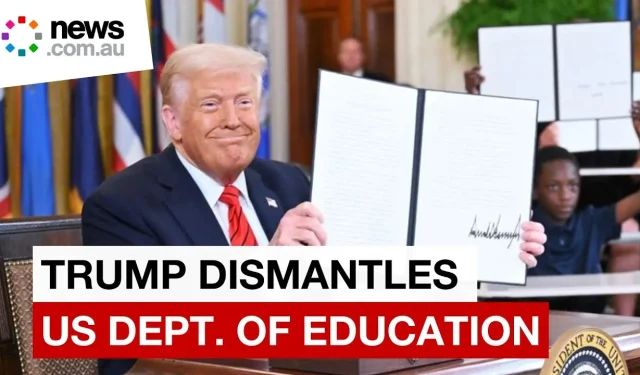In a landmark move that has sent waves through the American education system, U.S. President Donald Trump has proposed the shutdown of the Department of Education. This sweeping decision has significant repercussions for the nation’s approximately 49.6 million students, educators, and educational institutions.
Understanding the Proposed Closure of the Department of Education
The Department of Education plays a critical role in overseeing federal education policies, administering funding for public education, and ensuring compliance with educational laws. By proposing its closure, Trump aims to shift the focus of educational governance from federal oversight to state-level control.
Potential Consequences for Students and Schools
Approximately 49.6 million students could feel the direct impact of this action. Key areas of concern include:
- Funding Allocation: With the Department of Education’s funding mandate dissolved, states may struggle to fill the financial gaps, leading to significant disparities in education quality between wealthier and poorer districts.
- Access to Federal Programs: Students and schools that benefit from federal programs such as Title I funding for low-income areas and special education services could lose vital resources necessary for support and development.
- Standardized Testing and Accountability: The absence of federal oversight may result in a lack of standardized testing and accountability measures, potentially affecting educational outcomes and transparency.
Reactions from Educators and Policy Makers
The proposed dissolution has garnered mixed reactions from educators, policymakers, and advocacy groups. Many educators express concern that it could undermine efforts to address educational inequities and reduce access to quality education for marginalized communities.
Education advocates warn that removing federal assistance could exacerbate existing challenges in public education, particularly in underfunded areas. Meanwhile, some proponents of the measure argue for increased state autonomy in educational policy as a means of fostering innovation and tailored solutions.
Long-Term Implications for American Education
The long-term implications of shuttering the Department of Education could reshape the fabric of the American education system. Potential outcomes include:
- Increased State Control: States may gain more control over educational standards, curricula, and funding, leading to a patchwork of educational quality across the country.
- Shift Towards Voucher Systems: Some experts predict a trend towards educational voucher systems and charter schools if federal funding is not redirected, which could further affect public school enrollment and financing.
- Impact on Higher Education: Federal student aid programs, critical for many students pursuing higher education, may also come under scrutiny, impacting college access for countless individuals.
Conclusion: A Pivotal Moment for American Education
President Trump’s executive move to close the Department of Education marks a pivotal moment that could alter the landscape of education in the United States. As discussions unfold, it remains crucial for stakeholders across the nation to navigate the potential challenges and seek solutions that ensure equitable access to quality education for every student.


